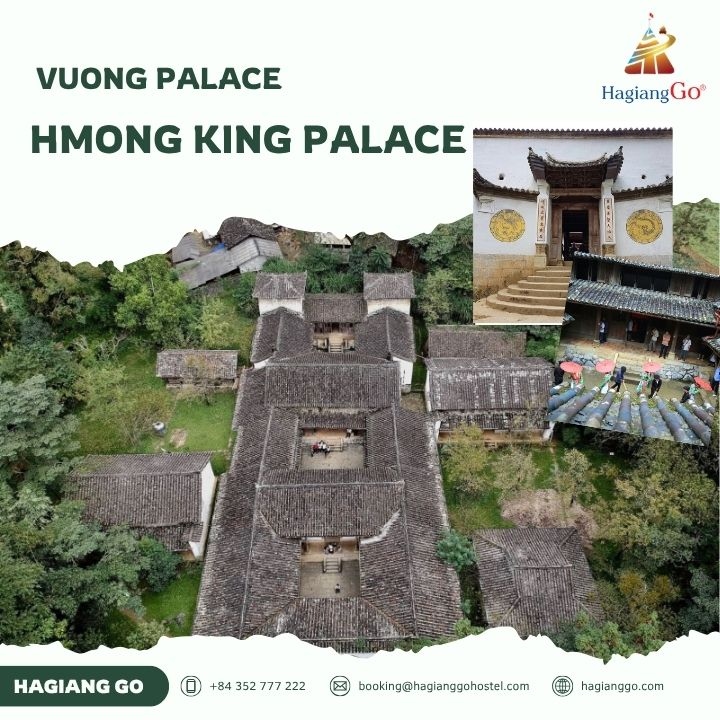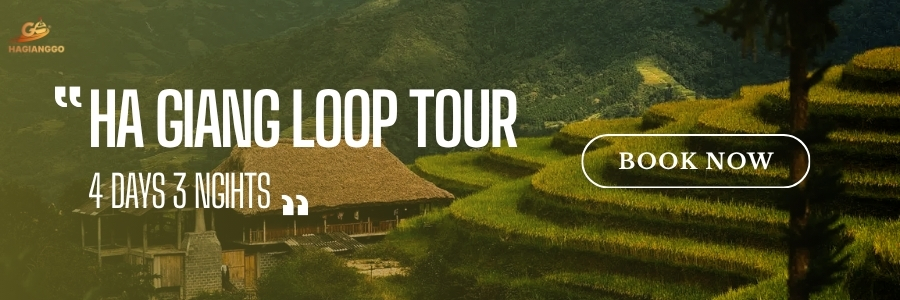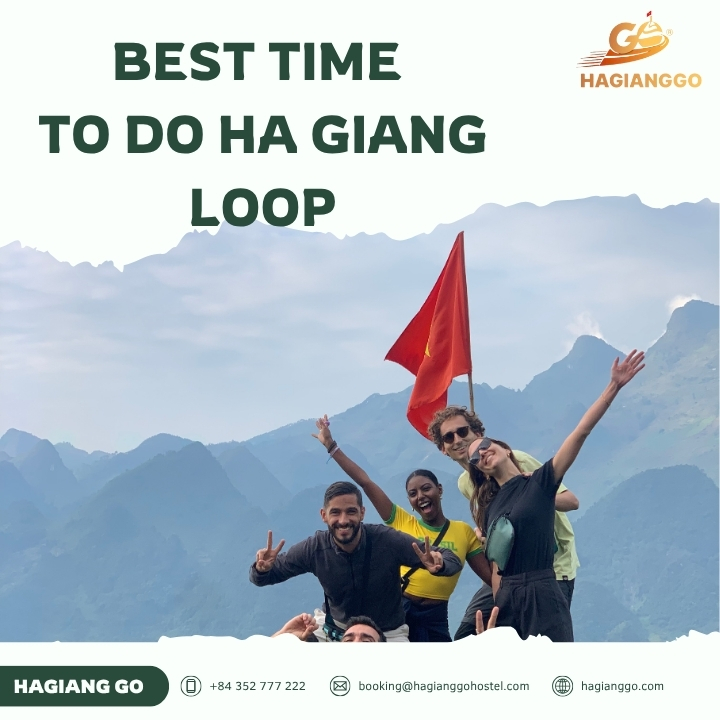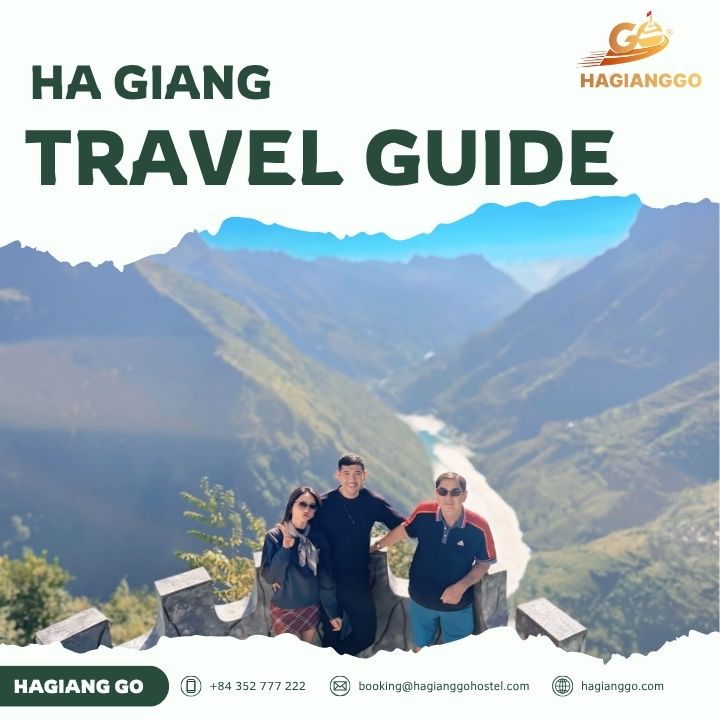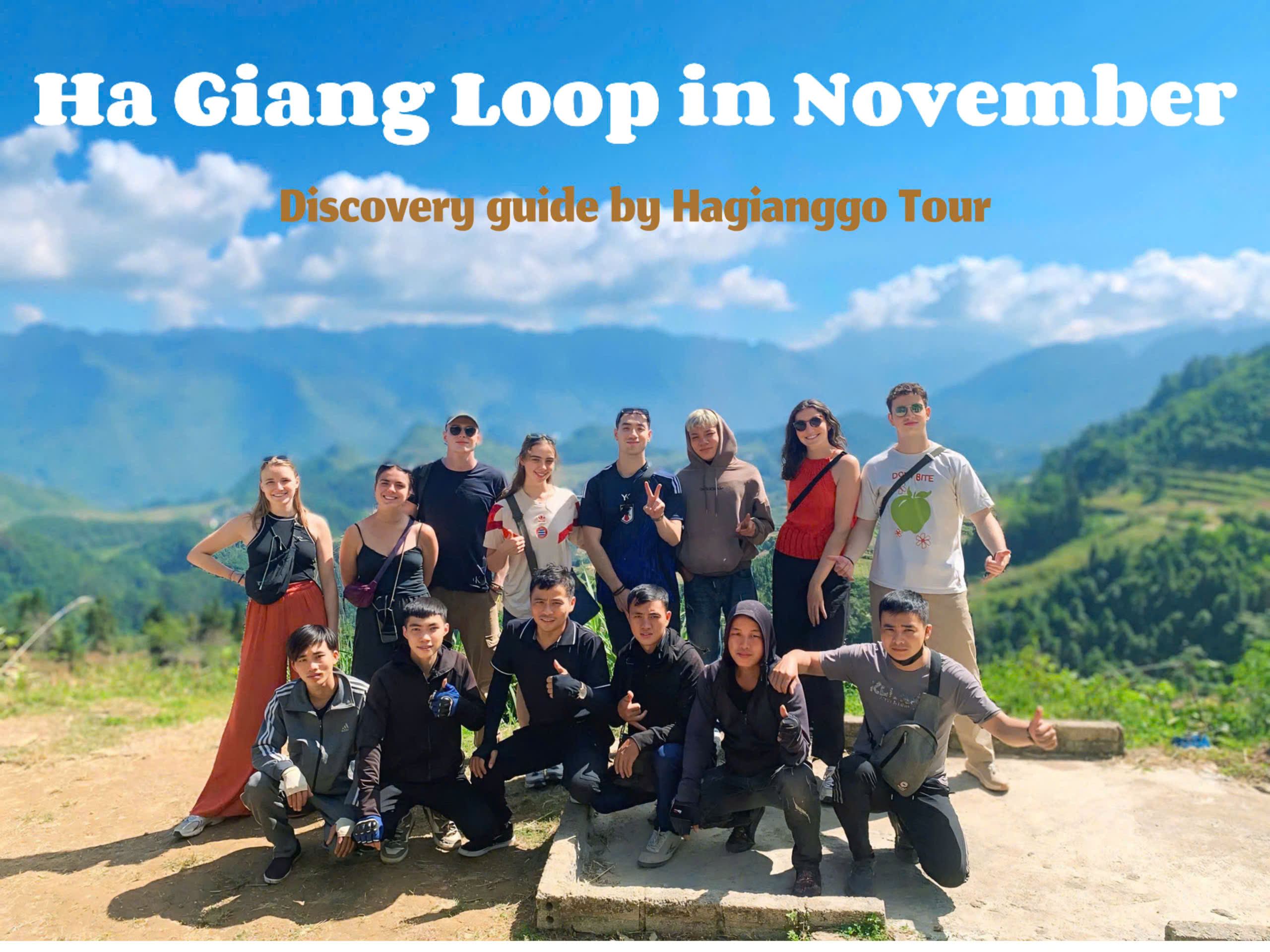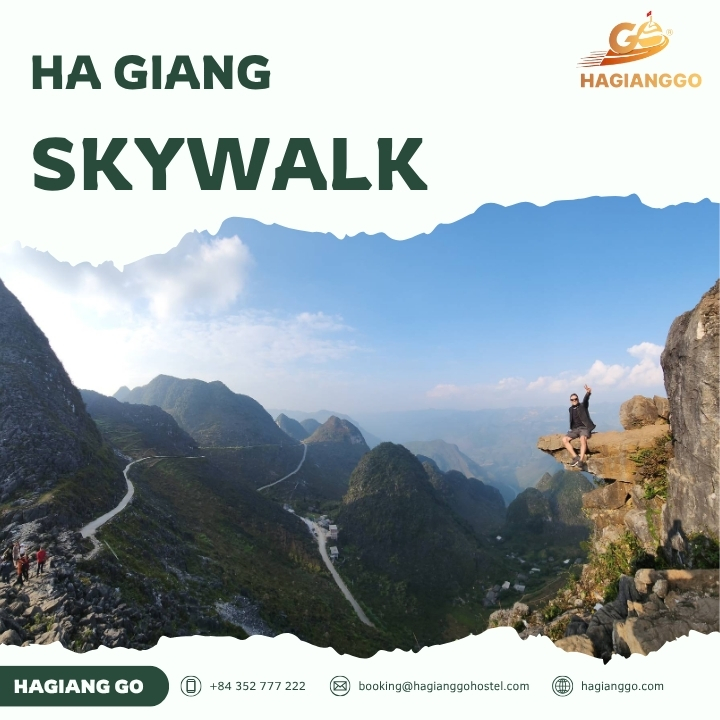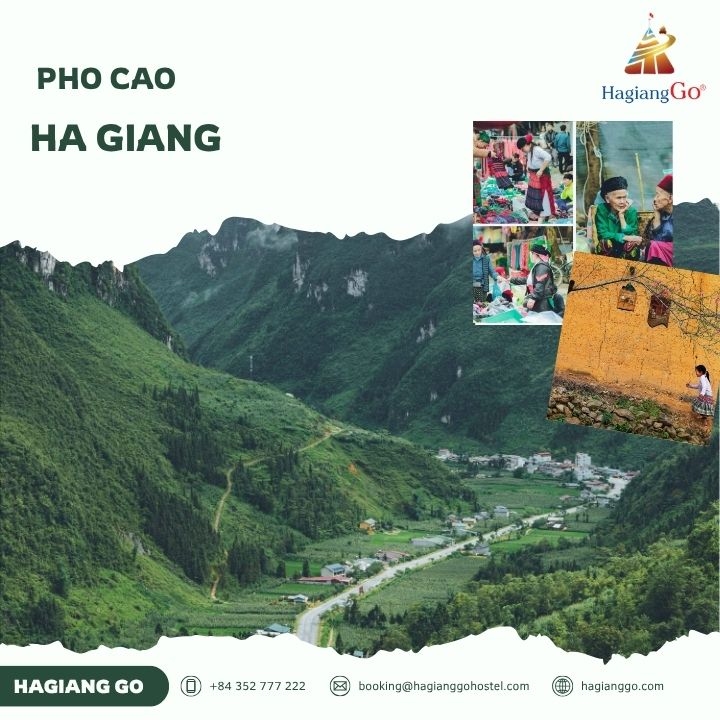For travelers seeking authentic cultural experiences beyond the typical tourist trails, the Ha Giang Hmong King House represents an unmissable destination that combines stunning architecture, compelling history, and breathtaking mountain scenery. Discover more about this site with HaGiang Go on this post below.
|
1. The Historical Significance of the Hmong King Palace
As one of the most famous attractions in Ha Giang, the Hmong King Palace was constructed in the early 20th century by Vuong Chinh Duc, a powerful Hmong leader who ruled over the region during the French colonial period. This remarkable structure, commonly referred to as the Vuong Palace, served as the seat of power for what was essentially an autonomous Hmong kingdom within the broader French Indochina territory.
The palace's construction began in 1902 and took several years to complete, representing a fascinating blend of traditional Hmong architecture with French colonial influences. Vuong Chinh Duc, known locally as the "Hmong King," established his authority over multiple ethnic communities in the area, including not only the Hmong but also the Tay, Nung, and other minority groups that called the Ha Giang mountains home.
The story of the Hmong King Palace is intrinsically linked to the rise of the Vuong family's influence in the region. Vuong Chinh Duc's father, Vuong Chinh Xa, had already established the family's prominence through successful business ventures and strategic alliances with French colonial administrators. This foundation allowed Vuong Chinh Duc to consolidate power and eventually construct his grand palace as a symbol of his authority.
The Ha Giang Hmong King House served multiple purposes beyond being a royal residence. It functioned as an administrative center, a fortress during times of conflict, and a cultural hub where important decisions affecting the local ethnic communities were made. The palace's strategic location in Dong Van district provided excellent views of the surrounding valleys and trade routes, allowing the Vuong family to maintain control over commerce and communication in the region.
Read more: Explore Ma Pi Leng Pass in Ha Giang: The ultimate guide for travellers
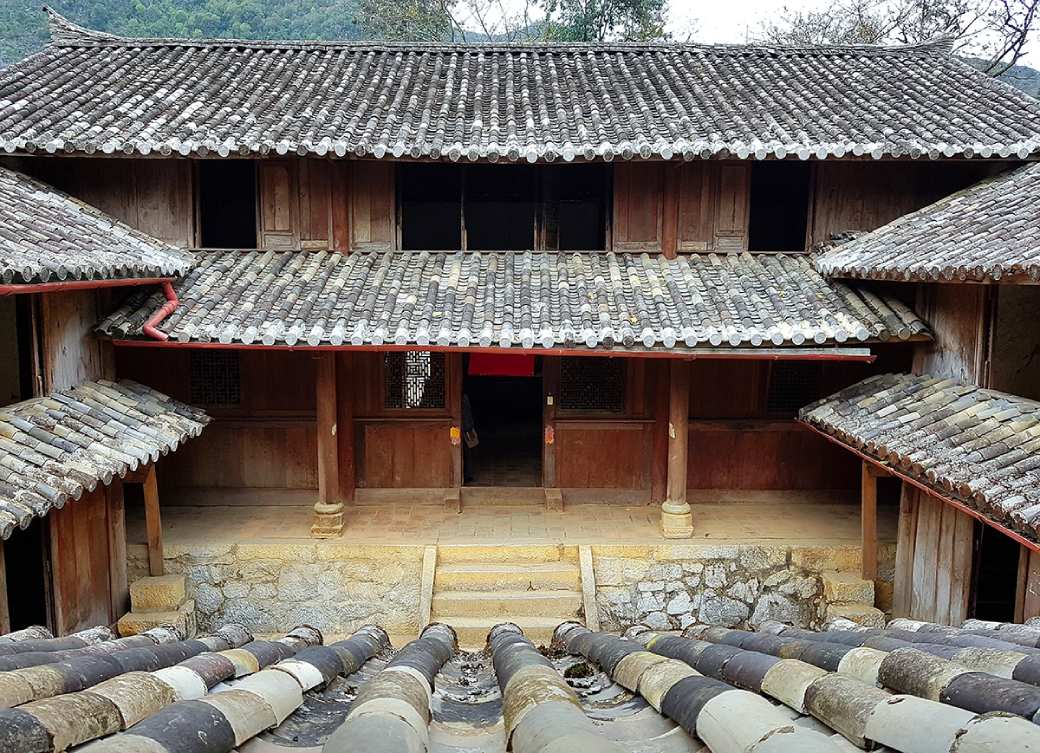
Source: Vnexpress
2. Architectural Marvels of the Vuong Palace
The Hmong King Palace showcases a unique architectural style that reflects the cultural fusion characteristic of early 20th-century northern Vietnam. The structure demonstrates how traditional Hmong building techniques were adapted and enhanced with influences from Chinese and French architectural elements, creating something truly distinctive in the landscape of Vietnamese historical sites.
2.1. Design Elements and Layout
The palace complex consists of multiple buildings arranged in a hierarchical layout that reflects traditional Asian palace design principles. The main structure of the Vuong Palace features thick stone walls, ornate wooden carvings, and distinctive rooflines that blend Chinese imperial styling with local Hmong construction techniques. The use of local materials, including limestone quarried from nearby mountains and timber from Ha Giang's forests, gives the palace a natural integration with its mountainous environment.
The courtyard design of the Ha Giang Hmong King House follows feng shui principles, with careful attention paid to the orientation of buildings and the flow of energy throughout the complex. Visitors can observe intricate details in the woodwork, including carved panels depicting dragons, phoenixes, and other symbolic creatures that held significance in both Chinese and local Hmong cultures.
2.2. Preservation and Restoration Efforts
Today's visitors to the Hmong King Palace can appreciate extensive restoration work that has preserved this historical treasure for future generations. The Vietnamese government has invested significantly in maintaining the structural integrity of the Vuong Palace while ensuring that restoration efforts remain true to the original architectural vision. These preservation efforts have been crucial in maintaining the palace's status as one of Ha Giang's most important cultural landmarks.
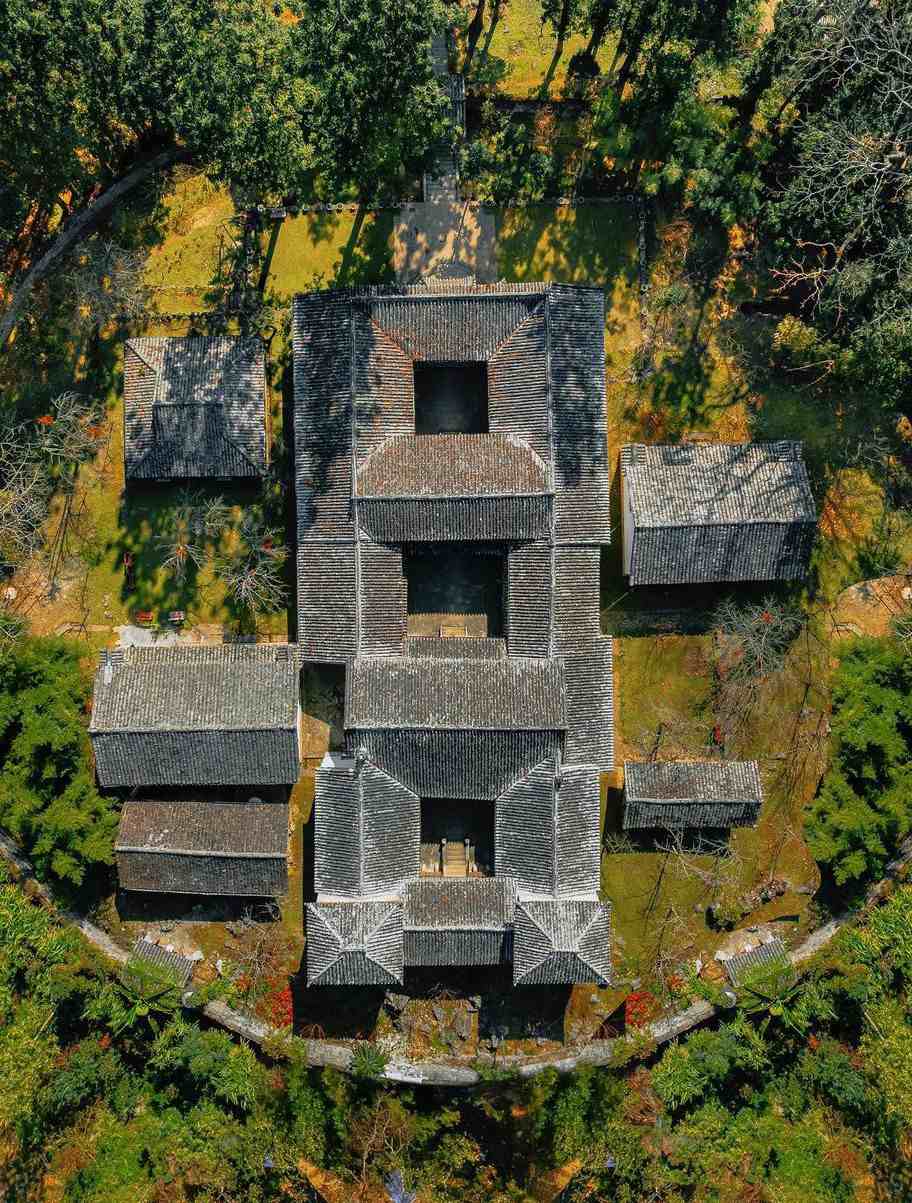
The palace from above - Source: Tienphong
interested in the unique architectural style of Ha Giang, you can also visit Pho Cao Town with the famous Trinh Tuong architecture!
4. Cultural Impact and Legacy
The Hmong King Palace represents more than just an architectural achievement; it serves as a tangible connection to the complex ethnic and political dynamics that shaped northern Vietnam in the early 20th century. The Vuong Palace stands as a testament to the sophisticated political structures that existed among ethnic minority communities, challenging simplified narratives about pre-modern Southeast Asian societies.
4.1. Understanding Hmong Culture Through the Palace
Visiting the Hmong King Palace provides invaluable insights into traditional Hmong social structures, religious beliefs, and cultural practices. The palace's design incorporates numerous elements that reflect Hmong cosmology and spiritual beliefs, from the positioning of buildings to the symbolic decorations found throughout the complex.
The Ha Giang Hmong King House also serves as a starting point for understanding the broader cultural landscape of Ha Giang province, where multiple ethnic groups have coexisted for centuries, each contributing to the region's rich cultural tapestry. HagiangGo's cultural tours often combine visits to the palace with opportunities to meet local Hmong families, participate in traditional activities, and gain deeper appreciation for contemporary Hmong culture.

Source: Hanoimoi
4.2. The Palace in Modern Times
Today, the Hmong King Palace functions as both a historical monument and an active cultural center. The site regularly hosts cultural events, traditional festivals, and educational programs that help preserve and promote Hmong cultural traditions. These activities ensure that the palace remains a living part of the community rather than simply a static historical display.
The Vuong Palace has become a significant driver of tourism in Ha Giang province, contributing to local economic development while promoting cultural understanding. Responsible tourism operators like HagiangGo work closely with local communities to ensure that tourism benefits reach local residents while maintaining respect for cultural sensitivities and environmental conservation.
The palace's growing popularity among both domestic and international tourists has led to improved infrastructure in the surrounding area, including better roads, accommodation options, and support services that benefit the entire regional economy.
MOTORBIKE RENTAL IN HA GIANG - BEST WAY TO EXPLORE THE LOOP BY YOURSELF!
5. Planning Your Visit to the Hmong King Palace
5.1. Best Times to Visit
The Hmong King Palace can be visited year-round, but certain seasons offer particularly rewarding experiences. Spring months (March-May) bring comfortable temperatures and blooming mountain flowers, while autumn (September-November) provides clear skies and stunning views of the surrounding landscape. Winter visits offer a different perspective, with occasional mist and fog creating atmospheric conditions that enhance the palace's mysterious aura.
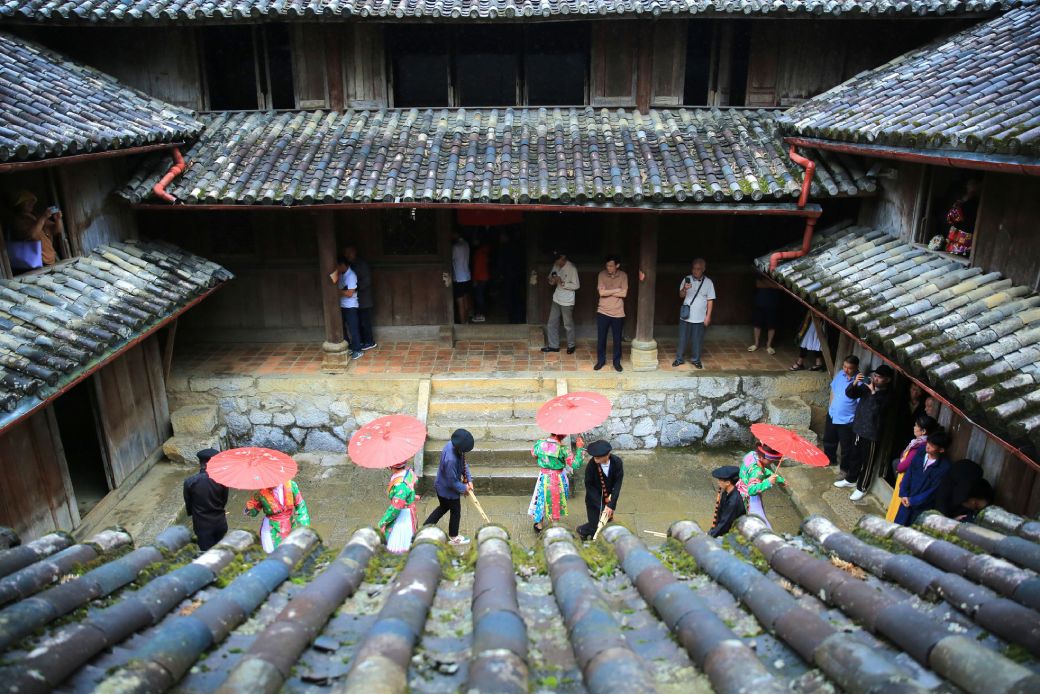
A traditional Hmong dance performance in the courtyard of Vuong Palace - Source: Tienphong
5.2. Getting to the Ha Giang Hmong King House
For travelers planning to visit the Hmong King Palace, the journey itself becomes part of the adventure. Located in Sa Phin commune, Dong Van district, the palace sits approximately 25 kilometers from Dong Van town center, making it easily accessible for those exploring the broader Ha Giang region.
The most convenient way to reach the Hmong King Palace is through organized tours with reputable operators like HagiangGo, who specialize in authentic cultural experiences throughout Ha Giang province. HagiangGo's expert guides provide valuable historical context and cultural insights that enhance the visitor experience, ensuring that guests gain a deep understanding of the palace's significance within Hmong culture and Vietnamese history.
Independent travelers can also reach the Vuong Palace by motorbike or car from Dong Van town. The journey takes approximately 45 minutes and offers spectacular views of the Dong Van Karst Plateau, a UNESCO Global Geopark that showcases some of Vietnam's most dramatic limestone landscapes.
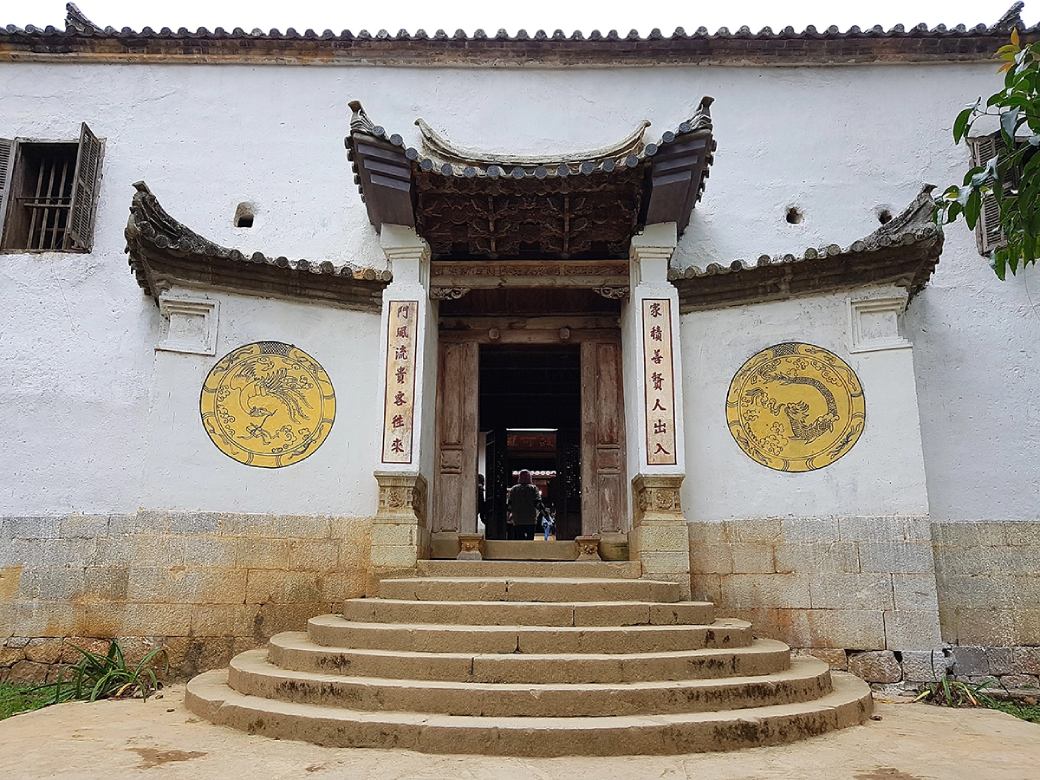
The main entrance to Vuong Palace - Source: Vnexpress
5.3. What to Expect During Your Visit
Upon arriving at the Hmong King Palace, visitors are immediately struck by the imposing presence of the main gate and the carefully maintained gardens that surround the complex. The entrance fee is modest, and guided tours are available in multiple languages, though booking through experienced operators like HagiangGo ensures access to the most knowledgeable local guides.
The tour of the Ha Giang Hmong King House typically begins in the main courtyard, where guides explain the layout and significance of different buildings within the complex. Visitors can explore the throne room, private quarters, administrative offices, and defensive structures that made up this remarkable royal compound.
5.4. Combining Your Palace Visit with Other Ha Giang Attractions
Most visitors to the Ha Giang Hmong King House combine their trip with exploration of other significant sites in the region. The Dong Van Karst Plateau offers spectacular geological formations, while nearby ethnic minority villages provide opportunities to experience traditional ways of life that have persisted for generations.
HagiangGo specializes in creating comprehensive itineraries that maximize visitors' time in the region while ensuring authentic cultural exchanges and sustainable tourism practices. Their multi-day tours often include the Hmong King Palace as a central feature while incorporating other highlights such as the Ma Pi Leng Pass, Lung Cu Flagpole, and traditional markets in Dong Van town.
After visiting Vuong Palace, consider exploring these nearby attractions in Ha Giang for a full experience:
- Lung Cu Flag Tower: This is the northernmost point of Vietnam, offering stunning panoramic views.
- Ma Pi Leng Pass: This is one of Vietnam’s "Four Great Passes," famous for its dramatic cliffs and winding roads.
- Nho Que River: Nho Que is a striking emerald river that cuts through the towering limestone mountains.
- Dong Van Ancient Town: This is a charming ancient town with traditional architecture and rich local culture.
5.5. Photography and Documentation
The Vuong Palace offers exceptional opportunities for photography, with its dramatic architecture set against the backdrop of Ha Giang's mountain landscapes. Visitors should be respectful when photographing, particularly in areas with religious or cultural significance, and should always ask permission before photographing local people.
The Hmong King Palace is a unique historical site in Ha Giang Vietnam that showcases the rich political and cultural heritage of northern ethnic minority communities. It reflects both architectural excellence and the region's historical balance between local autonomy and colonial influence. Today, it offers visitors an authentic and transformative cultural experience, especially through guided tours like those from HagiangGo. As tourism grows in Ha Giang province, the preserved palace remains a key attraction, fostering appreciation for Vietnam's ethnic diversity and supporting local communities through respectful tourism and preservation efforts.
